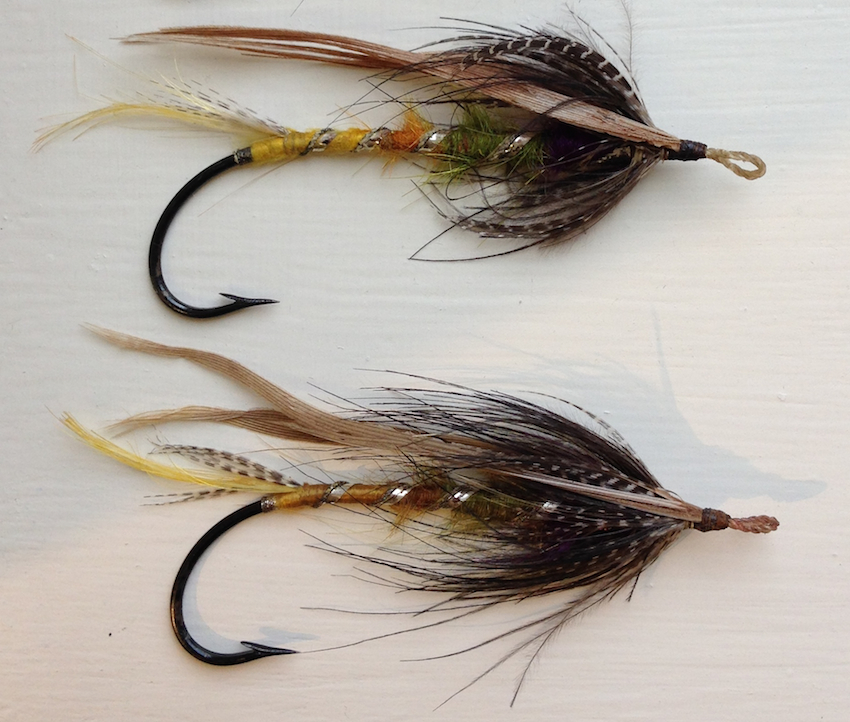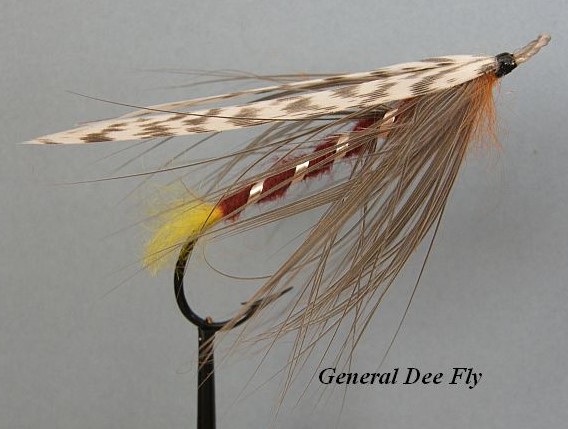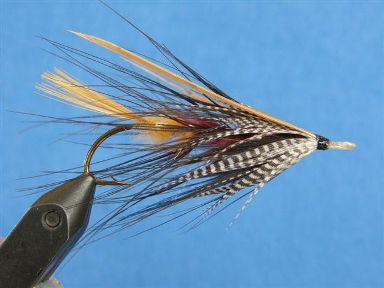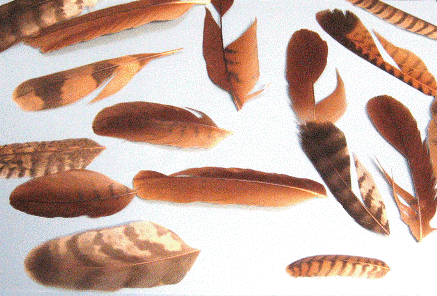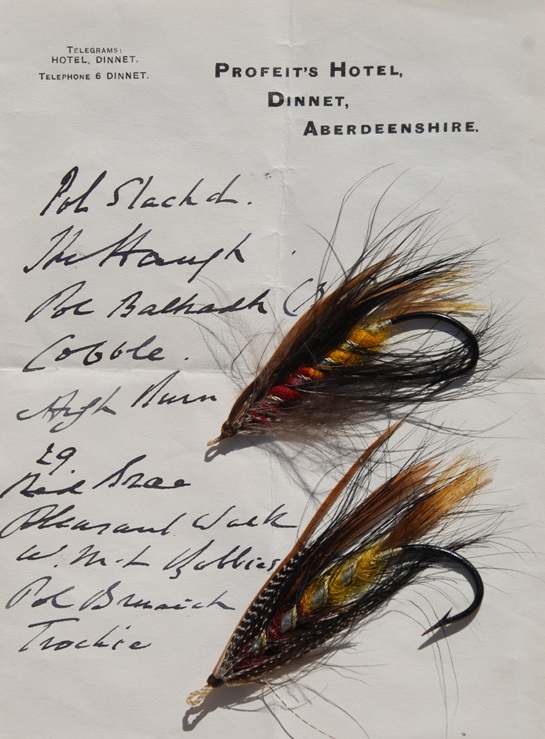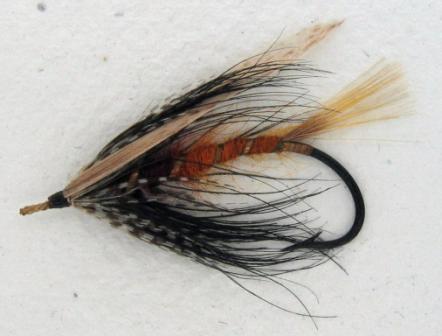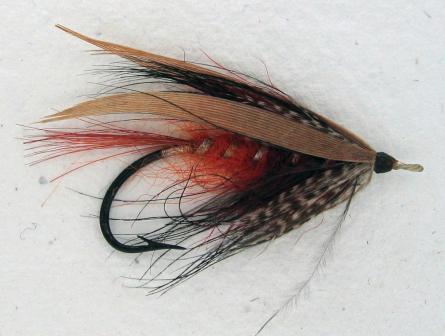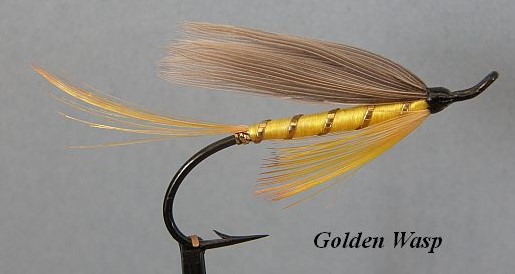 |
 |
|
On this page Empress, Enys, Fail-me-never, Gardener, General Dee Fly, Gled Wing, Glen Tannar, Golden Blue, Golden Wasp. Please scroll down Empress Kelson – Tips, 1901 Tag: Silver twist and yellow wool. Tail: Four golden Bird of Butt: Black wool. Body: Oval tinsel, two parts, and violet seal’s fur, one part. Hackle: Violet hackle along seal’s fur, ribbed with oval tinsel. Throat: Blue hackle. Wings: Two strips of dark brown mottled turkey, golden pheasant tail, grey mottled turkey, two broad strips of swan dyed rose, peacock’s herl, Horns: Blue macaw. Sides: Jungle When this pattern was introduced at Carlogie [a beat on the All these patterns are usually dressed, at
Enys
And here is one from Bob Frandsen, as he says it could not be much closer to the Durham Ranger! William Murdoch, Tag: Silver twist and gold-coloured floss Tail: A topping and sprigs of tippet. Butt: Black Ostrich. Body: Three turns gold-coloured floss, then almost equal joints of scarlet and medium blue fur – say, one turn more of the blue than of the scarlet; not much picked out. Ribbed: Oval twist (silver). Hackle: Yellow, from floss joint; peacock blue hackle at shoulder. Wing: Two tippets to half-way up tail; two jungle reaching to tip of tail; two tippets extending to the lower bar of the long (or inside) tippets; topping all over. Cheeks: Jungle, extending to the lower bar of outside tippet. Horns: Blue Macaw. Dressed on Limericks from No. 7/0 to 2/0 Small sizes of this fly are provided with a mixed wing. It was invented by Mr. Enys, of Enys, Cornwall Hardy – Salmon Fishing, 1907 Tag: Silver tinsel and gold floss. Tail: Topping and tippet. Butt: Black herl. Body: Three turns of gold floss, then equal joints of scarlet and dark blue seal’s fur. Ribs: Silver tinsel. Hackle: Yellow. Throat: Blue hackle. Wings: Two tippets; first half way up tail, two projecting jungle cock feathers; two tippets extending to bar of long tippets; topping. Sides: Jungle cock. Horns: Blue macaw. Head: Black
Fail-Me-Never William Murdoch Tag: Silver twist and pale blue floss. Tail: A topping. Butt: Pale blue wool. Body: Pale blue Mohair well picked out. Ribbed: Silver flat-worm. Hackle: Pale blue up body - full at shoulder. Wing: Composite, light shade, with a few fibres of green herl uppermost, and a topping all over. Cheeks: Chatterer. Horns: Blue Macaw. Head: Pale blue wool. Sizes the most useful: Nos. 3, 4, 5, 6, Limerick Bend hooks (Bartleet and Sons’ scale). In response to repeated requests to give in our columns a detailed description of the clear weather files invented by him, and used with great success by himself and friends, Mr. Murdoch has sent on the above dressing which he says he as found to be the best of his inventions under the following conditions: A great killer in pretty heavy peat-stained water under a bright sun, and also a very good evening fly when the water is a fairish volume and a trifle coloured.
Gardener
Vintage Gardener, note the GP crest tied as wing rather than hackle - perhaps the original way? Note that the Gardener was NOT invented by William Garden tackle maker of Aberdeen as stated in most modern books and web sites. It was infact "invented" by James Harper when he was working as a gardener at Monaltrie house (a large country house near Ballater on the Dee). This James Harper was the uncle of James Harper who was the propriotor of William Brown's business post 1901
James Harper senior - inventor of the Gardener fly In many modern books about the salmon fly the Gardener has been attributed to one William Garden, fishing tackle maker of So who did invent the Gardener? WM Tag: Silver tinsel and orange floss. Tail: A topping and fibres of golden pheasant tippet. Body: Two turns orange, two turns green, and four turns purple mohair. Rib: Silver tinsel and gold twist. Hackle: Large topping down the body. Shoulder: Black heron hackle. Cheeks: Jungle cock Wings: Dark brown turkey. Head: Black.
A rather pair of distressed Gardener - but shows the above version rather well On
Kelson – The Salmon Fly, 1885 Tag: Gold twist and crimson silk. Tail: A topping, and tippet strands. Body: Yellow, green, and dark blue seal’s fur in equal divisions. Ribs: Silver tinsel. Hackle: A topping (as hackle) from yellow fur. Throat: Black heron. Wings: Two strips, plain cinnamon turkey. Sides: Jungle (Short and drooping).
Hardy – Salmon Fishing, 1907 Tag: Gold tinsel and crimson floss. Tail: A topping and tippet. Body: Yellow, green, and dark blue seal’s fur in equal divisions. Ribs: Silver tinsel. Hackle: A topping. Throat: Black heron. Wings: Two strips, plain cinnamon turkey. Sides: Jungle cock. Head: Black. Pryce-Tannatt - How to Dress Salmon Flies, 1914 Tag: Gold thread and crimson floss. Tail: A topping and tippet in strands. Body: Yellow, green and dark blue Seal’s fur, in equal sections (dressed thin, but well picked out). Ribs: Flat silver tinsel and twist. Hackle: A pale orange hackle Throat: A black Heron’s hackle Wings: A pair of cinnamon Cheeks: Jungle Cock (drooping) Hook: 1½ to 3 inches I’m now in a position to right this wrong, and although posthumously, give credit where credit is due. James Harper the uncle of James Harper (proprietor of William Browns from 1901) invented the Gardener. My two sources are conclusive and of sufficient authority to put this issue to rest, the Fishing Gazette and a personal letter from Francis to his nephew, as follows; In an obituary of Francis Harper published in The Fishing Gazette, “His favourite flies were the Heron (with red wing), the Gardener (invented by his brother James), Jock Scott, Popham, Eagle (with mottled turkey wing), Gordon, Akroyd, Silver Doctor, Black Doctor, and Thunderer, and almost invariably the White Eagle was the fly with which he closed the day.” Also in a letter from James Senior to James Junior. “To James Harper Your letter arrived about Gardener Fly the pattern you sent me is the very same as I made at Monaltrie 36 years ago when at Monaltrie House & not Garden. Blacklaw will testify this also John Harper, Dess. First I made three, sent one to John, gave one to Mr Wilkinson tenant at Monaltrie and then one for myself. The three flies in one day landed 4 fish for John. Gentleman sent an order to me for 18 flies the same pattern, being scarce of feathers, I sent the order to Blacklaws Kincardine O Neil. Mr Wilkinson was much disappointed giving it away, he offered me 20 pounds to take out a patent for same, I wish I had done so and stopped the Garden work. Very bad fishing at Ballater, Gentlemen all left. I will see if Monaltrie water is for let May month, I believe there is three pools on P…ach water could be got very easy all May month v good pools but will try and see you the first time I come to Your uncle James Harper PS Will let you know Particulars if Monaltrie water be in the market JH” R.B. Marston PRIVATE Dear Mr Marston, I have not the personal acquaintance of G.M.K. [Kelson] and would shy of it, but am familiar with his identity from my old Bernard days in the early eighties. He has not left kindly impressions here nor on Spey. I marvel at the anxiety of some Angling writers for the credit of invention. (Pennell seems another case). The obvious shallowness of much of the quibbling must undermine any real claim they could establish for respect from future generations. G.M.K.s “Salmon Fly” and his long list of fearfully overdressed “inventions” is not to my liking. I recall to mind one error by him. He ascribes the “Gardener” to Garden. This fly was “invented” – to repeat his, in such case, ridiculous term – by my uncle James Harper while Gardener at Monaltrie, Ballater. There was, I believe, a real novelty here in the use of the Golden Pheasant Topping as a hackle. Well do I remember my boyish difficulty to get this to lie smoothly. This uncle is still alive but this winter has been hard on him. If you decide to come north this year and will let me know beforehand I may be able to arrange a little fishing for you. Yours faithfully, James Harper
General Dee Fly
Henry Wade – Halcyon – 1861 Wings, mottled turkey’s feather, either brown or white; body dark mohair, heron hackle, silver tinsel; shoulders, a twitch of yellow or orange mohair; tail tuft yellow. Wade also mentions Wingless hooks, like palmers, on a large scale, are sometimes used on the Dee and Don by salmon fishers. Francis Francis – A book on Angling A claret body and hackle, with mixed wing of long brown turkey, argus, and bustard feathers, with a gold pheasant sword feather in the midst, does well also, as does the back body and silver tinsel, with gallina shoulder and mixed wing.
Gled Wing or Red Wing
Gled Wing by Bob Fransden Francis Francis – A Book on Angling One of Mr. Browns Dee patterns Tag: Silver tinsel. Tail: Golden pheasant saddle. Body: One third orange yellow, and two thirds claret, or a light purple claret mohair, dressed very sparely. Ribbed: Broadish silver tinsel laid on rather thinly and in long spirals. Hackle; Black heron’s hackle of the largest size, or two if one will not go far enough, dressed down to the yellow mohair. They must be of the longest fibre, the longer the better; teal hackle on the shoulder, without which no Wings: Two good strips of swallow tailed gled of the larges fibre, or of red dun turkey of the like colour. Of course, these feathers must be of thin substance and fine in the fibre, to give them play, and they are to be set apart - a rather nice operation to do neatly, the strips requiring to be carefully prepared first by tying in at the extreme but; no head, as it is though to create ripple, while the sharp head of the regular Dee fly cuts the water with a smooth even gliding motion, opening and shutting its large fibres with a most life like appearance.
Some examples of feathers from the Gled or Red Kite (thanks to Philip Glendinning)
Glentanar
A pair of vintage Glentanars There as many dressings of the Glentanar as there way of spelling it's name, it is named after the Glen Tanar estate, which in turn is named after the stream called the Tanar, this joins the Dee at a pool called Tanar Mouth, just above the Lorne on the Aboyne Castle beat. It's a place I know quite well, the Tanar Mouth fishes well in low water condition and the sun always shines when I fish Aboyne Castle!
The fly is a (very) close relative to the Gled Wing and the Red Wing, the first dressing is I give is from a not so common source: Grimble – Shooting & Salmon Fishing – 1892 Tag: Silver twist Tail: Red saddle feather of gold pheasant. Body: Half yellow, half claret mohair, sparely put on, gold tinsel, and if the fly be large, then silver twist laid on beside it. Hackle: Black Heron laid on from commencement of claret wool, and teal at shoulder. Wings: Two long strips of red turkey or gled hawk, set on well apart.
WM Tag: Gold tinsel. Tail: Fibres of golden pheasant tippet. Body: Orange-red and blue mohair in equal proportion - blue at head; red in the centre and yellow beside tag. Ribbing: gold tinsel and silver twist. Hackle: Black heron. Shoulder: Teal. Wing: Red turkey. Head: Black. WM Glentanar I Tag: Silver tinsel Tail: Golden pheasant rump feather. Body: Two turns dark orange and two turns dark brown mohair Ribbing: silver tinsel and gold twist. Hackle: Black heron Shoulder: Teal. Wings: Brown turkey. Head: Black. We have to secure unanimity of opinion on the dressing of the “Glentanar”. There seems to be two patterns, almost identical – in fact, since the difference is so trifling that they may be regarded as one and the same. But a third patterns, said to as good if not better killer than either is also put forward. We therefore consider it necessary to give a detailed description of these patterns, notwithstanding the fact that a preponderance of evidence favours the idea that No. 1 is the correct and original “Glentanar” fly. Glentanar II Tag: Silver tinsel Tail: Golden pheasant rump feather. Body: Two turns dark orange and two turns claret mohair Ribbing: silver tinsel and gold twist. Hackle: Black heron Shoulder: Teal. Wings: Brown turkey. Head: Black. Glentanar III Tag: Silver tinsel Tail: Golden pheasant rump feather. Body: Yellow, blue and orange mohair in equal proportions, mohair of the body well picked out Ribbing: silver tinsel. Hackle: Long black heron Shoulder: Guinea fowl. Wings: Brown turkey, gradually inclining to a lighter shade towards the tips. Head: Black.
Kelson – The Salmon Fly, 1885 Tag: Silver twist. Tail: Red breast feather of golden pheasant. Body: One third light orange seal’s fur; and light claret seal’s fur. Ribs: Silver lace and silver tinsel. Hackle: Black heron, from orange fur. Throat: Widgeon. Wings: Two strips of plain cinnamon turkey showing light points. An old Hardy – Salmon Fishing, 1907 Tag: Silver tinsel. Tail: Red breast feather of golden pheasant. Body: One third light orange seal’s fur; and light claret seal’s fur. Ribs: Silver lace and silver tinsel. Hackle: Black heron. Throat: Widgeon. Wings: Two strips of plain cinnamon turkey showing light points. Head: Black. Pryce-Tannatt - How to Dress Salmon Flies, 1914 Tag: Silver thread and lemon floss. Tail: A topping and the tip of a golden pheasant’s breast feather. Body: First third, light orange seal’s fur; remainder, claret seal’s fur (dressed thin, but well picked out). Ribs: Flat silver tinsel and twist. Hackle: A black heron’s hackle from third turn of tinsel. Throat: Widgeon. Wings: A pair of cinnamon turkey tail strips (set flat). Hook: 1½ to 3 inches.
Golden Blue William Murdoch Tag: Silver twist and pale blue floss. Tail: A topping or two. Body: Silver tinsel. Hackle: Greenish blue - at shoulder only. Wing: Several rich toppings; or golden hackles and topping over. Head: Pale blue wool. Sizes the most useful: Nos. 4, 5, 6, 7, Limerick Bend hooks (Bartleet and Sons’ scale). In response to repeated requests to give in our columns a detailed description of the clear weather files invented by him, and used with great success by himself and friends, Mr. Murdoch has sent on the above dressing which he says he as found to be the best of his inventions under the following conditions: For brown water under a strong sun on warm days specially good. Golden Wasp
William Murdoch Tag: Gold thread. Tail: A topping. Body: Golden floss. Ribbed: Gold flat-worm. Hackle: Golden hackle or crest - at shoulder only. Wing: Double strips under wing of jay - pale feather. Head: Black. Sizes the most useful: Nos. 6, 7, 8, 9, Limerick Bend hooks (Bartleet and Sons’ scale). In response to repeated requests to give in our columns a detailed description of the clear weather files invented by him, and used with great success by himself and friends, Mr. Murdoch has sent on the above dressing which he says he as found to be the best of his inventions under the following conditions: Chiefly for grilse and sea-trout - best in water a little peat-coloured, and when the weather is warm and the sun out strong.
.
|
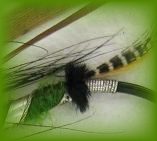
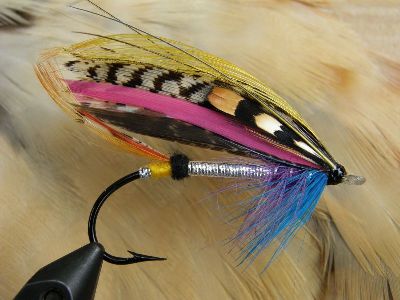
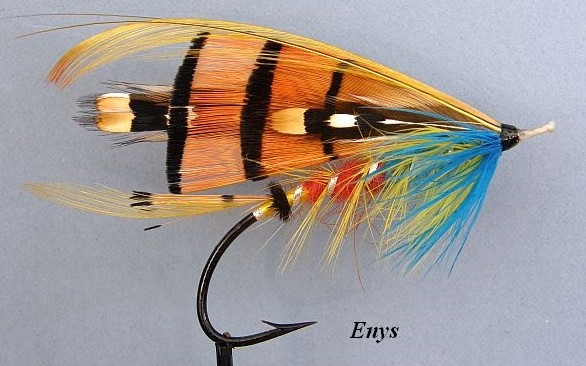
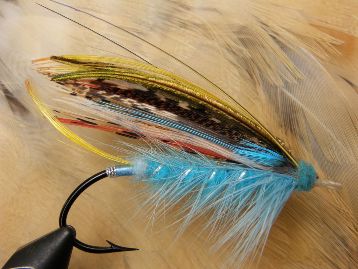
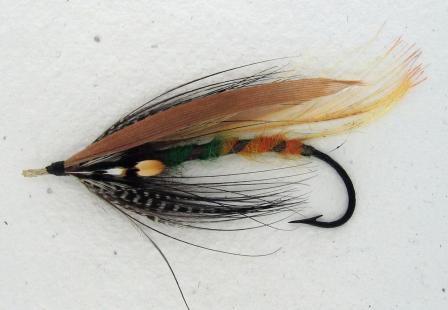
![JamesHarper[2]](images/JamesHarper[2].jpg?144)
